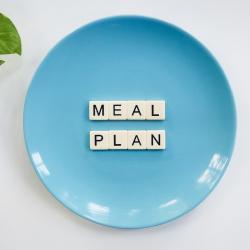How to Meal Plan for Healthy Weight Loss
Achieving and maintaining a healthy weight requires a balanced approach that combines nutrition, regular physical activity, and a sustainable lifestyle. Among these, meal planning emerges as a crucial component that not only aids weight loss but also promotes healthier eating habits. Here’s a comprehensive guide on how to effectively meal plan for healthy weight loss.
Understanding Meal Planning
Meal planning involves organizing your meals in advance to ensure you consume a balanced diet aligned with your health goals. It helps in controlling portion sizes, reducing food waste, saving money, and minimizing the stress of deciding what to eat every day.
Steps to Meal Plan Effectively
-
Set Clear Goals: Begin by setting realistic and achievable weight loss goals. Understand your daily caloric needs, which can be calculated based on age, sex, weight, height, and physical activity level. Aim to create a calorie deficit necessary for weight loss but ensure it remains healthy and sustainable.
-
Choose Balanced Meals: Focus on meals that are rich in nutrients rather than those solely based on calorie counts. Each meal should include:
- Lean Proteins: Such as chicken, tofu, legumes, and fish which help in building muscles and keeping you full longer.
- Complex Carbohydrates: Incorporate whole grains, quinoa, and sweet potatoes that provide sustained energy and essential nutrients.
- Healthy Fats: Include avocados, nuts, seeds, and olive oil for satiety and cardiovascular health.
- Fruits and Vegetables: Ensure half of your plate consists of a variety of colorful fruits and vegetables, which are low in calories but rich in fiber, vitamins, and minerals.
-
Plan Your Meals and Snacks: Spend time each week planning your meals and snacks. Prepare a menu that outlines breakfast, lunch, dinner, and any snacks. Including snacks in your plan can prevent hunger-driven eating and assist with sticking to your calorie goals.
-
Prep in Advance: Meal prep saves time and prevents the temptation of turning to unhealthy options. Chop vegetables, marinate proteins, and cook grains in advance. Consider bulk cooking parts or entire meals to simplify your week.
-
Control Portions: Use measuring cups and kitchen scales to serve appropriate portion sizes. This practice helps prevent overeating while ensuring you consume enough nutrients.
-
Stay Hydrated: Sometimes, the body mistakes thirst for hunger. Drinking water throughout the day can help manage appetite and enhance overall health.
-
Monitor and Adjust: Keep track of what you eat using a food diary or apps. Monitoring your meals provides insights into eating patterns and can highlight areas for improvement. Feel free to adjust your plan based on results – incrementally increase physical activity or tweak meal portions as necessary.
Tips for Success
- Variety is Key: Avoid monotony by trying new recipes and rotating ingredients.
- Indulge Smartly: Allow yourself occasional treats but in moderation to maintain your mental well-being.
- Listen to Your Body: Pay attention to hunger cues and practice mindful eating techniques.
The Benefits Beyond Weight Loss
Meal planning extends benefits beyond weight loss. It enhances overall dietary quality, promotes better digestion, stabilizes blood sugar levels, and can even improve mood and cognitive function through balanced nutrient intake.
Remember, the most effective meal plan is one that fits seamlessly into your lifestyle, catering to both your nutritional needs and personal preferences. With careful planning and dedication, you’ll be well on your way to achieving healthier weight loss and maintaining long-term wellness.






















